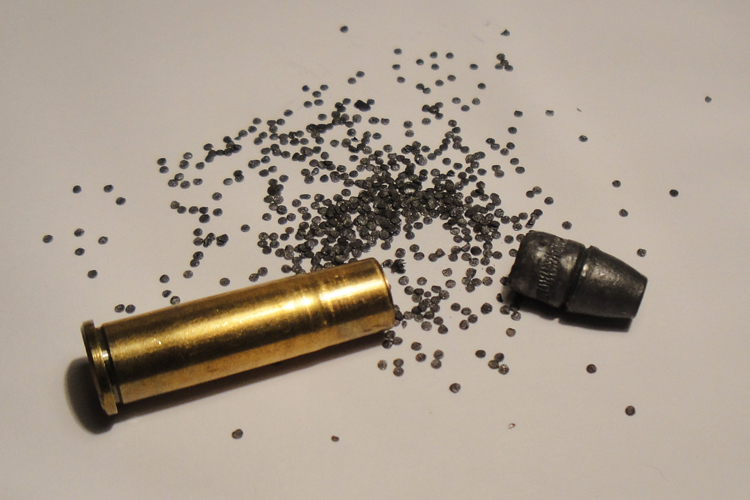What are the Hazards of Ammunitions?
Ammunition is propellant and projectile. The nature of ammunition also includes pyrotechnic or incendiary compounds.
Ammunition involves the application of fire to targets, general use of weapons by personnel, explosives and propellants, cartridge systems, high explosive projectiles (HE), warheads, shaped charge forms of attack on armour and aircraft, carrier projectiles, mortar ammunition, small arms ammunition, grenades, mines, pyrotechnics, improved conventional munitions, and terminally guided munition.
Firing a gunshot leads to the expulsion of vapours and particulate materials termed gunshot residues (GSR) which includes particles of primer residue i.e. oxides of lead, antimony and barium as principle components. A fired bullet itself may contribute to lead particles or the particles of its jacket. Metallic lead or its oxide airborne followed by inhalation would
lead to chronic lead poisoning. Such poisoning has been shown to cause adverse effects in hematopoietic, nervous, endocrine, cardiovascular, reproductive and renal systems. Thus, airborne lead encountered during the routine firing practices is an increasing health concern for our security personnel.
Ammunition is Combustible and is an Explosion Hazard:
When most people think of controlling dust in the workplace, they think of taking steps to avoid inhaling dusts to prevent health problems. However, the accumulation of combustible dusts in the workplace can lead to far greater consequences. As seen in recent years, neglect of housekeeping and improper handling of combustible dusts can lead to property damage, injuries and loss of life.
Primer is the mixture of high sensitive explosive materials in ammunition. Initiated by the
mechanical force of the striking by the firing pin, the primer mixture will explode causing a jet of flame thus ignites the propellant i.e. the smokeless powder propelling the bullet. Common primer mixtures include compounds of lead, antimony and barium. In primer, there are also other elements which are often found to be associated with gunshot residues including copper, iron, as well as other non-specific elements such as silicon, aluminium, potassium, calcium and sulfur primer vapours often condense and liquefy onto the primer surface as droplets.
The National Fire Protection Association (NFPA) defines a combustible dust as “a combustible particulate solid that presents a fire or deflagration hazard when suspended in air or some other oxidizing medium over a range of concentrations, regardless of particle size or shape.”
In general, combustible particulates having an effective diameter of 420 μm or smaller, as determined by passing through a U.S. No. 40 Standard Sieve, are generally considered to be combustible dusts. However, agglomerates of combustible materials that have lengths that are large compared to their diameter (and will not usually pass through a 420 μm sieve) can still pose a deflagration hazard. Therefore, any particle that has a surface area to volume ratio greater than that of a 420 μm diameter sphere should also be considered a combustible dust. The vast majority of natural and synthetic organic materials, as well as some metals, can form combustible dust. The NFPA’s Industrial Fire Hazards Handbook states, “any industrial process that reduces a combustible material and some normally non-combustible materials to a finely divided state presents a potential for a serious fire or explosion.”
Suggested Industrial Vacuums for Ammunition Recovery
PrestiVac HEPAPlus* Vacuums are specifically designed to safely vacuum toxic dusts. Equipped with a Certified Absolute HEPAPlus*filter with an efficiency of 99.995% on 0.2 micron so there is no risk of exposure or contamination for the operator or the environment. These vacuums are tested for absolute filtration. Testing Method: IEST RP-CC034.3. H14. MIL-STD 282 / A.S.T.M. - D2986-91. MPPS method EN 1822.
PrestiVac Explosion Proof/Dust Ignition Protected Vacuums are designed to safely vacuum explosive, flammable, combustible conductive* dusts. Our Explosion Proof/Dust Ignition Protected Vacuums are completely grounded and static dissipating because they are built entirely with non-sparking metals and do not have any painted components so there is no risk of fire or explosion from a spark or static build up. All the electrical components, including the motor and starter are totally enclosed so there is no source of ignition. Our explosion proof vacuum cleaners comply with NFPA 484 guidelines and are an effective tool for good housekeeping practise as per OSHA.
- Dust Ignition Protected Division 2 Vacuums
- Explosion Proof Division 1 Vacuums
- HEPA Vacuums
- Immersion Separator
- Immersion Separator Dustless Sanding Vacuums
Which Industries are at Risk with Ammunition?













